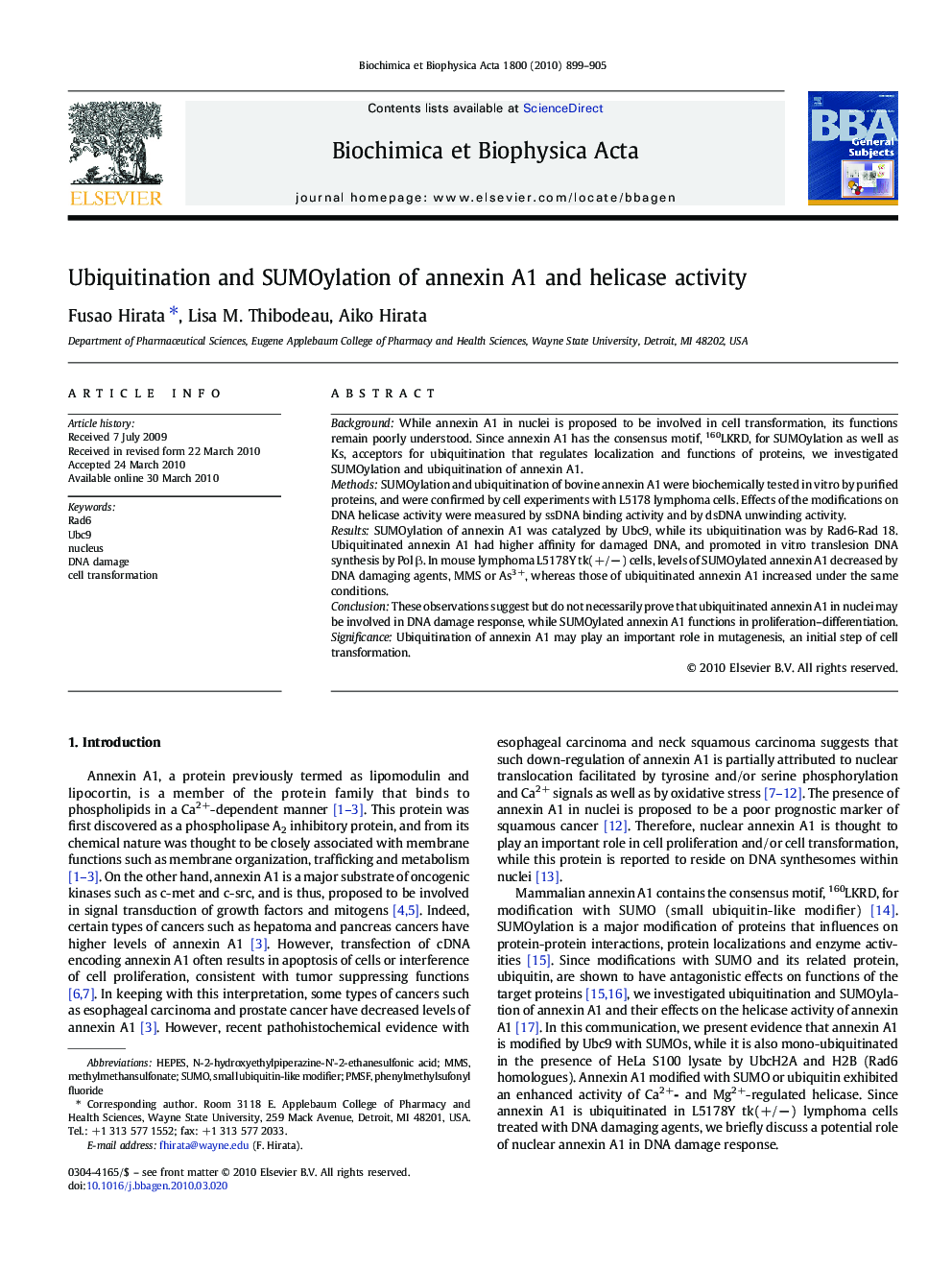| Article ID | Journal | Published Year | Pages | File Type |
|---|---|---|---|---|
| 1947929 | Biochimica et Biophysica Acta (BBA) - General Subjects | 2010 | 7 Pages |
BackgroundWhile annexin A1 in nuclei is proposed to be involved in cell transformation, its functions remain poorly understood. Since annexin A1 has the consensus motif, 160LKRD, for SUMOylation as well as Ks, acceptors for ubiquitination that regulates localization and functions of proteins, we investigated SUMOylation and ubiquitination of annexin A1.MethodsSUMOylation and ubiquitination of bovine annexin A1 were biochemically tested in vitro by purified proteins, and were confirmed by cell experiments with L5178 lymphoma cells. Effects of the modifications on DNA helicase activity were measured by ssDNA binding activity and by dsDNA unwinding activity.ResultsSUMOylation of annexin A1 was catalyzed by Ubc9, while its ubiquitination was by Rad6-Rad 18. Ubiquitinated annexin A1 had higher affinity for damaged DNA, and promoted in vitro translesion DNA synthesis by Pol β. In mouse lymphoma L5178Y tk(+/−) cells, levels of SUMOylated annexin A1 decreased by DNA damaging agents, MMS or As3+, whereas those of ubiquitinated annexin A1 increased under the same conditions.ConclusionThese observations suggest but do not necessarily prove that ubiquitinated annexin A1 in nuclei may be involved in DNA damage response, while SUMOylated annexin A1 functions in proliferation–differentiation.SignificanceUbiquitination of annexin A1 may play an important role in mutagenesis, an initial step of cell transformation.
